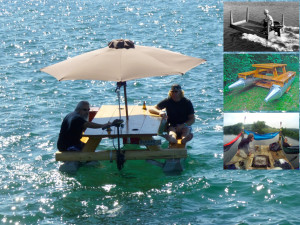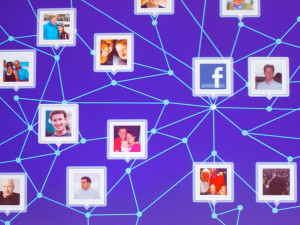By way of, ahem, encouragement, the lovely Alexandra Deschamps-Sonsino last week challenged/shamed me into writing 100 posts in 100 days. This is 1/100.
Fortunately I already had something partly written. It’s occurred to me that a lot of thought, discussion and debate goes into the talks I give (I pretty much never do the same talk twice), and yet I almost never write them up. This seems foolish, so I’m fixing it, starting now.
I’ve been thinking for the past few years about how the distance between policy and the reality we live in (especially out here on the weird edge of the tech industry) affects the work we do. Even the most altruistic of us, when we’re going along at maximum speed, don’t have time or bandwidth to think through all the ethical implications – to say nothing of big corporates who are driven by growth rather than ethics. This seems to be a place where sound policy could and should provide a framework to help, but it’s quite far from the way government policy and business – let alone government and citizens – interact. So I was excited to be invited to speak at the annual DIGIT-ICT conference at the European Commission in Brussels. This is (more or less) what I said.
The challenge
Policy is necessarily abstract – it needs to be as broadly applicable as possible. Unfortunately, abstraction can be quite difficult for the average person to grasp – most people see abstraction as pretty far removed from reality.
But even the photo doesn’t really tell you what these things are all about – we don’t see that until a person engages with them, makes music with them. That’s when they realise their potential. Policy is like that – it doesn’t truly have meaning until people engage with it. And technology is the same: until someone interacts with it, puts it to work, it’s only potential.
Speaking of technology, that’s at the heart of the other big challenge.
The pace of policymaking is glacial: this glacier moved 17 km in 2012 and that was considered terrifyingly fast. Whatever Elon Musk and his cronies might say, it’s good that way – if policy changed as quickly as the tech landscape, we’d be living in perpetual chaos. Glaciers, like governments, move slowly, but they change everything in their path.
Technology, on the other hand, moves quickly. It dodges around obstacles, flows in unexpected directions. Sometimes it alters the landscape, sometimes the landscape alters it. Often it’s hard to tell which.
So what do we do? How can we reconcile the gap between abstraction and interaction, between the glacier and the stream?
Predictably, I’m going to say we do it by focussing on people. But the trouble with people is that they do some seriously unexpected things.
If we can’t get what we want through accepted channels, we’ll make our own way. We humans are hard-wired to be hacker monkeys – not necessarily with technology, but with anything we can get our hands on. We’ll make a town out of shipping containers; we’ll make a boat out of a picnic table. And once one of us has figured a way around a problem, more are sure to follow.
The thing is, when it comes to the digital world, we’ve gotten away with a lot over the years because not that many people are comfortable with hacking their computers, laptops and smartphones. But now that we’re starting to put technology in everyday objects (more on that in a minute), embed it in our cities, we’re venturing into territory where the average citizen isn’t likely to be so docile.
This – making things that actually work for people, that are sustainable for users and businesses – has been the challenge I’ve been working with for the past 18 years. So here are a few things to think about that have been useful to me.
1. WHY is more important than WHAT
What happened is interesting. But you can’t know what to do about it unless you understand why.
We’ve already established that humans are great at finding ways to game the system. But unless you know why they’re doing it, you can’t counter that. And sometimes the reasons are rather unexpected.
In 2013, I was in Milan doing a workshop at Frontiers of Interaction and was invited to do an on-air segment with the lovely Barbara Carfagna for Rai1. Before the interview we chatted about the series, which was aimed at Italians who were less enthusiastic about digital technology. Barbara asked me what I thought was the big driver for rural internet uptake amongst older Italians. I guessed what I imagine most people would: contact with grandkids and family who’d moved away. I was wrong. It was church – specifically, the ability to attend a service from bed, thanks to a webcam trained on the altar.
Why is this significant? Because if you want to change people’s behaviour, you need to understand what motivates them, which is not necessarily what would motivate you, or what you’d expect. This enables you to speak to them on a level that’s meaningful to them.
As we’ve already seen, people are geniuses at gaming the system when it doesn’t provide what they want. So the best, most sustainable and robust systems are the ones where, when they’re gamed, everybody still wins. That requires a combination of humility (to examine and understand motives) and creative thinking (to reframe your ideas).
Here’s an example: Alinea is a Michelin-starred restaurant in Chicago. They face the same challenges that many other Michelin-starred establishments do: first, the constant demand for extremely limited availability, and the overhead required to deal with that flood. Second, the risk that people who’ve made a booking don’t turn up – operating costs at this level of gastronomy are considerably higher than the place on the corner.
So someone very clever at Alinea thought about this a bit differently: what is a tasting menu, really? It’s not a meal in the usual sense. It’s an experience. It’s closer to a performance than a dinner – and what do people do for performances? They buy tickets.
Alinea now sells tickets for seatings instead of taking traditional bookings. This is brilliant – people are used to paying for tickets up front, which removes the financial risk; and if someone can’t make their appointed time they can always sell the tickets on. Plus, running a largely automated ticketing system is far less strain on overhead. There is probably a healthy grey market out there for Alinea tickets, which is just another example of people gaming a system – but that’s ok, the system still works.
2. Think beyond your boundaries
I’m not just talking about countries here, though we know that technology is dissolving international borders in many ways. I’m talking about areas of people’s lives, things that might have been disparate once upon a time but that technology has brought together – again, sometimes in unexpected ways. Sometimes this can be a good thing. Other times it can make messes.
First, an example from my working life. I do a lot of thinking and strategy around the Internet of Things, and particularly about the current craze for making everyday objects ‘smart’ through connectivity.
Let’s say I redo my kitchen next year. Let’s say I install the blinds that can be controlled from an iPhone app. I’ll also want the latest in coffee-making technology – the Nespresso machine with a temperature sensor in the milk compartment to keep it fresher, longer. And I’ll want something solar-powered – I’ve heard gossip about a dishwasher being in the works. I’ll have my new Click & Grow, which by then will probably have a solar sensor to monitor how much light my basil is getting whilst I’m away travelling. And finally I’ll of course have a connected thermostat to help optimise my energy consumption and costs.
At some point on a sunny afternoon in May, probably when I’m on a stage somewhere, all four of these appliances will be at war over whether the blinds should be open or shut. The coffee maker will want them closed, to keep the milk fresh; the dishwasher will want them open to charge up for the dinner dishes (it doesn’t know I won’t be back tonight). The Click & Grow will want them open too, because the basil needs more light, but the thermostat will want them shut because it’s getting hot with all that afternoon sun.
Who’s going to mitigate this? That’s right, I am. So while I’m on stage, my iPhone will be vibrating every 30 seconds, letting me know the blinds are open-closed-open-closed-open-closed. And then, later on, I’ll have to try to solve the problem. Can you imagine going into every one of those apps, trying to find the right combination of settings that will keep them from arguing with each other?
The thing is, the people making these products aren’t trying to make my life miserable. They’re probably perfectly well-intentioned, thinking they’re making things easier for me. But because they’re not looking beyond the boundary of the individual product they’re working on, they’re quite likely to make a mess. Equally, in the policy world, important things can be missed by failing to look across topic areas.
Two of the key focus areas for the EC are Boosting Jobs, Growth and Investment and Justice and Fundamental Rights, including the right to online privacy. The teams committed to these priorities don’t have much contact with one another – that’s just the way the EC is organised.
But there’s been a trend growing for the past several years that spans these two areas: HR staff and recruiters going to people’s personal online social media profiles and disqualifying them as candidates based on what they find there. It used to be the case that, provided I (or anyone) performed well at work, dressed and behaved appropriately while on the job, my private life was my own. Now, a photo someone took at Uni a decade ago or more – even if I wasn’t the one who posted it – could kill my career. This seems unfairly discriminatory – the kind of thing that policymakers customarily engage with. But unless the EC can find a way to look across the boundaries of its priority areas, this could slip through the cracks.
There are also plenty of opportunities that sit across commonly disparate areas, in government as in the business world. More flexible ways of working together and sharing knowledge can help to uncover them.
3. Embrace the unexpected
As previously discussed, people do unexpected and sometimes strange things. But this isn’t necessarily bad or wrong – it can be inspiring, show us new opportunities and improve the things we’re already doing and making.
This is another unfortunate side effect of one type of connected products – they draw conclusions that may or may not be right. Take an iron, for example. I can buy one tomorrow and once I’ve paid for it, I can do whatever I like with it. I can iron shirts, but I could also use it as a doorstop, or a weapon, or to make grilled cheese sandwiches like they did in Benny and Joon. The point is, it’s my iron and I can do what I like with it. But if that iron has been imbued with a sense of purpose by its manufacturer – no matter how well-intentioned – I could easily find myself at odds with it, as it tries to steam my sandwiches.
On the other hand, there are plenty of examples of product companies taking inspiration from people’s unexpected behaviour. 5 or 6 years ago, I used to illustrate this unexpectedness by showing a photo of someone opening a beer bottle with the business end of a USB stick. When I tried to find a new image for a talk a few months ago, a quick google turned up a combination USB stick/bottle opener. Someone looked at the (arguably not very clever) way people were using a product, and thought, “now there’s an interesting idea…”
It takes a certain kind of courage to not jump to conclusions about how people will behave, but it can also bear big rewards. We’ve seen lots of businesses pop up recently that are built on fringe behaviour (like renting out your spare room to a stranger) and made that behaviour more mainstream. Similar opportunities exist for governments to engage with their citizens to solve problems and address challenges in new and unexpected ways.
Finally
This all comes down to different ways of saying the same thing: when we put people in focus, what emerges is both challenges and opportunities. People are already the heart of every system – and we also happen to be rather chaotic and unpredictable. But when we embrace that unpredictability instead of trying to quash it, great things can happen.











